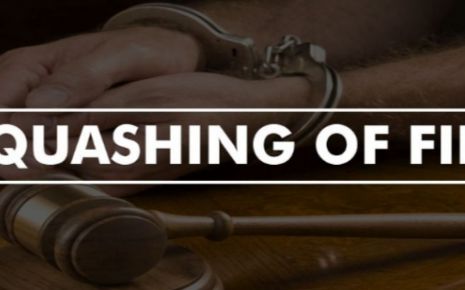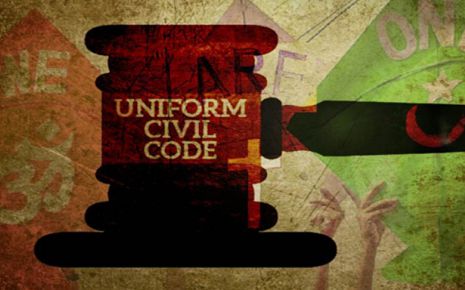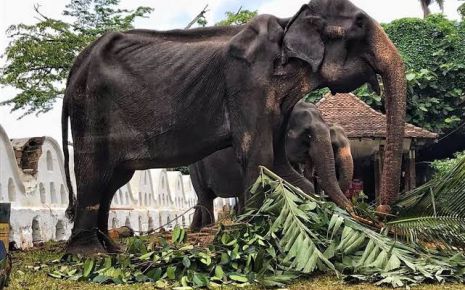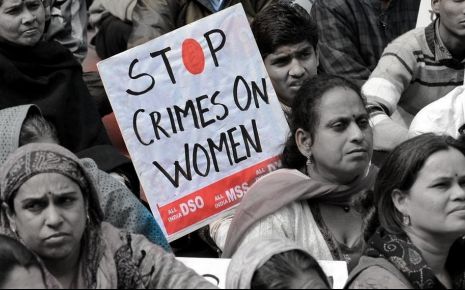Casteism: A Challenge for Election in India
The ideology of casteism is deeply rooted in the people of India, and has
been a challenge for the country's electoral system. The caste system is not
something new to us, we all are well aware of this term and it has influenced
various aspects of our life, and today we will be talking about in the context
of politics, how casteism has a control in politics.
It categorizes people into different social groups or castes, each with its own traditional occupation, social status and prescribed roles. The discrimination on the basis of caste has led to the exclusion of various groups from Indian society. And similarly, this poison has entered into Indian politics affecting our electoral and democratic process.
The main aim of this research paper is to deal with the complexities of casteism as a challenge for elections in India. The paper will mainly focus upon measures taken to address casteism in elections and how the caste system controls the role of Indian politics and will also examine the historical context analysing the role of caste in electoral politics.
Historical Context
The origin and the evolution of the caste system in India is complex and a debated topic. The system of caste has evolved and taken various forms throughout history. The translation of the word caste is said "jati '' and it was first derived from Spanish and Portuguese word "casta" which means "race" or "lineage". Earlier, the caste system was most prevalent in the Hindu societies but later with time it was read with religion and got spread to other religions also.
Casteism in India has been a long time social-political issue with a long historical background. As we all know that caste based discrimination has controlled our life in various aspects, out of which one aspect we will talk about regarding elections is how caste has taken control over the process of election and how the voters can be influenced easily through it.
The main root cause that initiated the caste discrimination was at the time of British colonial period (18-19thcentury) as when Britishers entered India they recognised the caste system and came up with the "policy of divide and rule" exploiting various communities and maintaining their control over them. Colonial government implemented reservation policies called communal representation which allocated seats on the basis of caste and religion which supported the policy of caste discrimination and hatred amongst own people which Britishers took benefit of.
As we move towards the pre- independence era there we saw the emergence of various political parties and some of the great leaders such as Mahatma Gandhi, whose scope and motive was to establish peace and end the idea of caste discrimination from the society and its own people and to promote harmony and equality amongst all.
On the other hand, leaders like B.R Ambedkar mainly focused upon the upliftment of their community where Gandhi ji was trying to eradicate the caste discrimination from society. B.R Ambedkar pointed out the upliftment of the Dalits also referred to as untouchables. He was said to be the father of the Constitution, as he played a vital role in framing the Constitution Of India where he also talked about the reservation to address caste based discrimination.
Now after India gained Independence 1947, the issue of casteism in India still prevailed in politics and elections. Now the "reservation policy" came into existence that those who are historically backward such as Scheduled caste (SC) , Scheduled Tribes (ST), and Other Backward Caste (OBC) were granted reservation quotas in the field of education, government jobs and other governmental bodies. The reservation policy has an idea that it will lead to the upliftment of the marginalized group and will also help candidates to receive votes from these people after providing them the benefit so it was a win-win situation for both.
There have been various political parties in India, and these political parties on the basis of their caste identities gained prominence. Most of the time these party represent themselves through caste as Samajwadi party , Bahujan Samaj Party led by Kanshi Ram and later by Mayawati and Dravida Munnetra Kazhagam (DMK) in Tamil Nadu successfully had used caste based politics to consolidate support and win elections.
It is important to note that while efforts have been made to address caste based discrimination through affirmative action and political representation, the issue of casteism remains deeply rooted in Indian society. Overcoming caste based divisions and achieving social equality continues to be a complex and ongoing struggle.
To overcome these obstacles, a multidimensional strategy is required, which includes promoting diversity and inclusion, addressing prejudices and preconceptions, providing assistance and resources for disadvantaged candidates, and altering electoral processes to ensure equal representation.
Elections that eliminate or marginalize certain sectors of society can have serious consequences for societal justice and growth.
Future Approach
Election casteism and striving towards a more comprehensive and equitable society necessitate continuing efforts and future initiatives.
Conclusion
Therefore, the concept of casteism in elections and society is a crucial seek for promoting social justice and equality. The elimination and marginalization of criticized groups in elections have significant implications for societal progress and the advancement of justice. However, the try have been made to cope up with these challenges through various means which have been broadly discussed above in the paper
Electoral changes, affirmative action laws, awareness campaigns, legal interventions, empowerment and education efforts, and social and cultural movements have all played a part in eliminating caste-based prejudice. These efforts attempted to promote representation, challenge prejudices, raise awareness, and empower marginalised castes.
Though It is essential to recognize that the elimination of casteism requires sustained commitment, mutual actions, and a multi-faceted approach. By addressing casteism in elections and society. everyone should join their hands together and work towards a future where every individual, regardless of caste, has equal opportunities, rights, and representation, fostering a more inclusive and equitable society for all.
References:
Written By: Shivanshu Gusain, 4th year BA LLB student - Delhi Metropolitan Education, Noida Affiliated to GGSIP University, Delhi.
It categorizes people into different social groups or castes, each with its own traditional occupation, social status and prescribed roles. The discrimination on the basis of caste has led to the exclusion of various groups from Indian society. And similarly, this poison has entered into Indian politics affecting our electoral and democratic process.
The main aim of this research paper is to deal with the complexities of casteism as a challenge for elections in India. The paper will mainly focus upon measures taken to address casteism in elections and how the caste system controls the role of Indian politics and will also examine the historical context analysing the role of caste in electoral politics.
Historical Context
The origin and the evolution of the caste system in India is complex and a debated topic. The system of caste has evolved and taken various forms throughout history. The translation of the word caste is said "jati '' and it was first derived from Spanish and Portuguese word "casta" which means "race" or "lineage". Earlier, the caste system was most prevalent in the Hindu societies but later with time it was read with religion and got spread to other religions also.
Casteism in India has been a long time social-political issue with a long historical background. As we all know that caste based discrimination has controlled our life in various aspects, out of which one aspect we will talk about regarding elections is how caste has taken control over the process of election and how the voters can be influenced easily through it.
The main root cause that initiated the caste discrimination was at the time of British colonial period (18-19thcentury) as when Britishers entered India they recognised the caste system and came up with the "policy of divide and rule" exploiting various communities and maintaining their control over them. Colonial government implemented reservation policies called communal representation which allocated seats on the basis of caste and religion which supported the policy of caste discrimination and hatred amongst own people which Britishers took benefit of.
As we move towards the pre- independence era there we saw the emergence of various political parties and some of the great leaders such as Mahatma Gandhi, whose scope and motive was to establish peace and end the idea of caste discrimination from the society and its own people and to promote harmony and equality amongst all.
On the other hand, leaders like B.R Ambedkar mainly focused upon the upliftment of their community where Gandhi ji was trying to eradicate the caste discrimination from society. B.R Ambedkar pointed out the upliftment of the Dalits also referred to as untouchables. He was said to be the father of the Constitution, as he played a vital role in framing the Constitution Of India where he also talked about the reservation to address caste based discrimination.
Now after India gained Independence 1947, the issue of casteism in India still prevailed in politics and elections. Now the "reservation policy" came into existence that those who are historically backward such as Scheduled caste (SC) , Scheduled Tribes (ST), and Other Backward Caste (OBC) were granted reservation quotas in the field of education, government jobs and other governmental bodies. The reservation policy has an idea that it will lead to the upliftment of the marginalized group and will also help candidates to receive votes from these people after providing them the benefit so it was a win-win situation for both.
There have been various political parties in India, and these political parties on the basis of their caste identities gained prominence. Most of the time these party represent themselves through caste as Samajwadi party , Bahujan Samaj Party led by Kanshi Ram and later by Mayawati and Dravida Munnetra Kazhagam (DMK) in Tamil Nadu successfully had used caste based politics to consolidate support and win elections.
It is important to note that while efforts have been made to address caste based discrimination through affirmative action and political representation, the issue of casteism remains deeply rooted in Indian society. Overcoming caste based divisions and achieving social equality continues to be a complex and ongoing struggle.
Influence of The Caste Affiliation on Voter Behaviour
The caste affiliation has a significant influence on voters behaviour in India. There are certain factors that contribute to the phenomenon of caste voting such as:- Caste- Based Interest and Demands:
Different caste groups often have specific socio- eco interests and demands. Parties are seen as representing or advocating for the interests of particular castes are more likely to gain support from those caste groups. Voters therefore tend to align themselves with political parties or candidates who they think will address their caste-specific concerns such as access to resources, development, welfare policies or reservation benefits.
- Symbolic Representation:
The term symbolic representation refers to the representation of a particular caste or community in politics. When these candidates stand for elections then the voters from their caste perceive it as a form of representation and empowerment. They believe that this representation can create a symbol of loyalty amongst caste members, influencing their voting behaviour.
- Perceived Security and Protection:
In certain regions the caste based voting patterns may be influenced by a perceived need for security and protection. Those marginalised groups who are from a backward background who have faced oppression may vote for the candidate or parties who will promise to protect their rights and ensure proper safety to them and provide political empowerment.
- Traditions:
The caste voting patterns are often passed from generation to generation as with families adhering with traditional voting patterns associated with their caste. Supposing, if a family votes for the candidate who belongs to their own caste, there is the possibility that the next generation will also vote for that candidate or his political party as we discussed that the caste voting patterns are influenced by traditions.
- Candidate who are perceived as Champions:
As the reservation policies have a significant role on voters behaviour. Measures such as reservation quotas for SC, ST's, and OBC have increased political representation for historically marginalized groups. Voters from their caste often prioritize supporting candidates or parties that are perceived as a champion of their reservation rights and welfare.
Elimination and Marginalisation
The hurdles faced by the criticized group of the society in competing for elections: it varies and depends upon the specific context and the type of criticism still, some common hurdles they may encounter includes-- Vote Bank Politics:
Most of the political parties at the time of election align themselves with a particular caste to secure vote banks, leading to the marginalization of other communities. This practise reinforces the caste division and results in policies and decisions that favour certain caste at expense of others.
- Discrimination in Party Relationship:
Most often, these dominant castes often occupy key positions of power within political parties, resulting in the exclusion of marginalized castes from leadership roles. This lack of representation can further marginalize oppressed communities and limit their influence in decision making process.
- Reservation System:
The motive behind reservation system in India was to provide an affirmative action for historically disadvantaged castes and tribes. It has helped for the upliftment of these marginalized communities, and has also initiated debates and controversies. Some communities believe that it continues with caste division and reinforces the identities of exclusion.
- Lack of Representation:
Criticised communities have historically been underrepresented in positions of power and influence. The lack of role models and mentors in their communities might stymie their political ambitions and perpetuate the cycle of underrepresentation.
- Negative Media Representation:
Media coverage may have a significant impact on public opinion and political debate. Criticised organisations are frequently portrayed negatively or unfairly by the media, which focuses on their perceived shortcomings or scandals rather than their qualifications or policy stances.
- Institutional Barriers:
Existing political processes and organisations may include inherent biases that make competition difficult for disadvantaged groups. This might include stringent qualifying requirements, skewed voting systems, or a lack of opportunity for diverse candidates to seek office.
To overcome these obstacles, a multidimensional strategy is required, which includes promoting diversity and inclusion, addressing prejudices and preconceptions, providing assistance and resources for disadvantaged candidates, and altering electoral processes to ensure equal representation.
Elections that eliminate or marginalize certain sectors of society can have serious consequences for societal justice and growth.
Here are some examples of how this might happen:
- Lack of Representation:
When criticised groups are removed or marginalised in elections, there is a lack of representation of varied ideas and experiences in decision-making processes. This limits the ability to address the needs and concerns of these groups, resulting in policies and legislation that may perpetuate inequities and injustices.
- Reinforcement of Power Imbalances:
The exclusion of criticized groups from the political arena reinforces existing power imbalances and hierarchies within society. This further entrenches systems of oppression and discrimination, making it difficult to challenge and overcome structural barriers.
- Preconceptions and biases are Perpetuated:
The removal and marginalisation of criticised groups in elections can perpetuate preconceptions and biases against them. It sends a message to society that their opinions and concerns are unimportant, promoting negative prejudices and impeding progress towards a more inclusive and just society.
- Missed Opportunities for Progress:
Criticised communities frequently provide unique viewpoints, ideas, and solutions to society concerns. When their voices are stifled or ignored in the political realm, society misses out on the potential achievements that may have been gained via their involvement and contributions.
Attempt Performed To Mark Casteism In Elections
Casteism refers to the practice of discriminating an individual or group of people based on their caste or social scale, it has been a significant issue still been faced in some societies, particularly in South Africa, here are some attempts that have been performed to tackle casteism in the electoral process:-- Electoral Reforms:
The Election Commission of India (ECI) has implemented various electoral reforms to curb caste based politics. These reforms include strict enforcement of Model Code of Conduct, guidelines on hate speech and inflammatory language, and monitoring of election expenditure to prevent misuse of money power.
- Campaigns for Spreading Awareness:
Organising these awareness campaigns and social movements plays a crucial role in spreading awareness and it is the best way to challenge caste-based discrimination.
- Educating:
Various efforts have been made to educate voters about the importance of choosing candidates based upon their qualifications, capabilities, and policies rather than their caste affiliations.
- Social and Cultural Movements:
A number of social and cultural movements have evolved to combat caste prejudice and promote social equality. By campaigning for equality and justice, these movements promote awareness, challenge old conventions, and encourage social change.
- Inter Caste Alliances:
Some political parties have actively tried to build inter-caste alliances to counter caste-based politics. By forging alliances across different castes and communities, these parties aim to break the barriers of caste divisions and foster unity among diverse sections of society.
Future Approach
Election casteism and striving towards a more comprehensive and equitable society necessitate continuing efforts and future initiatives.
Here are some possible future approaches to consider:
- Strengthening Anti-Discrimination Laws:
Implementing and strengthening laws that prohibit caste-based discrimination in politics and elections is essential. Strict enforcement of laws along with an effective mechanism for reporting and redressal can act as a deterrent and promote a more inclusive political environment.
- Improvement to Electoral System:
Improvements to the electoral system have been carried out to fight against caste-based discrimination. Solutions such as quotas or reservation systems for particular groups of castes have been introduced in some countries. These reservations ensure the representation of underprivileged people or castes in legislation.
- Education:
Educating these people about their rights and providing them with skill development programs and political awareness campaigns can empower them to actively participate in the political process and challenge the practices of discrimination.
- Data Collection and Research:
It is critical to collect reliable and disaggregated data on caste-based discrimination in order to comprehend the scope of the problem and develop evidence-based policies and remedies. Investing in research that looks at how caste intersects with other social concerns can also provide useful insights for reducing structural inequality.
- Media and Representation:
It is critical to promote appropriate and inclusive media coverage to combat caste-based prejudice. Promoting diverse media coverage, involving marginalized castes in decision-making roles, and highlighting positive stories can help fight prejudices and promote social inclusion.
- Political Reforms:
Encourage political parties to promote merit-based selections of candidates rather than focusing on caste-based vote bank politics. Encourage parties to field candidates from diverse backgrounds, including marginalized communities.
Conclusion
Therefore, the concept of casteism in elections and society is a crucial seek for promoting social justice and equality. The elimination and marginalization of criticized groups in elections have significant implications for societal progress and the advancement of justice. However, the try have been made to cope up with these challenges through various means which have been broadly discussed above in the paper
Electoral changes, affirmative action laws, awareness campaigns, legal interventions, empowerment and education efforts, and social and cultural movements have all played a part in eliminating caste-based prejudice. These efforts attempted to promote representation, challenge prejudices, raise awareness, and empower marginalised castes.
Though It is essential to recognize that the elimination of casteism requires sustained commitment, mutual actions, and a multi-faceted approach. By addressing casteism in elections and society. everyone should join their hands together and work towards a future where every individual, regardless of caste, has equal opportunities, rights, and representation, fostering a more inclusive and equitable society for all.
References:
- https://timesofindia.indiatimes.com/readersblog/role-of-caste-in-indian-politics/role-of-caste-in-indian-politics-34730/
- https://www.geeksforgeeks.org/role-of-caste-in-indian-politics/
- https://www.ijnrd.org/papers/IJNRD2204066.pdf
- https://isha.sadhguru.org/in/en/wisdom/article/how-to-end-caste-system-india
- https://timesofindia.indiatimes.com/blogs/voices/one-reform-to-make-india-caste-invisible/
Written By: Shivanshu Gusain, 4th year BA LLB student - Delhi Metropolitan Education, Noida Affiliated to GGSIP University, Delhi.
Law Article in India
Legal Question & Answers
Lawyers in India - Search By City
LawArticles
How To File For Mutual Divorce In Delhi

How To File For Mutual Divorce In Delhi Mutual Consent Divorce is the Simplest Way to Obtain a D...
Increased Age For Girls Marriage

It is hoped that the Prohibition of Child Marriage (Amendment) Bill, 2021, which intends to inc...
Facade of Social Media

One may very easily get absorbed in the lives of others as one scrolls through a Facebook news ...
Section 482 CrPc - Quashing Of FIR: Guid...

The Inherent power under Section 482 in The Code Of Criminal Procedure, 1973 (37th Chapter of t...
The Uniform Civil Code (UCC) in India: A...

The Uniform Civil Code (UCC) is a concept that proposes the unification of personal laws across...
Role Of Artificial Intelligence In Legal...

Artificial intelligence (AI) is revolutionizing various sectors of the economy, and the legal i...








Please Drop Your Comments